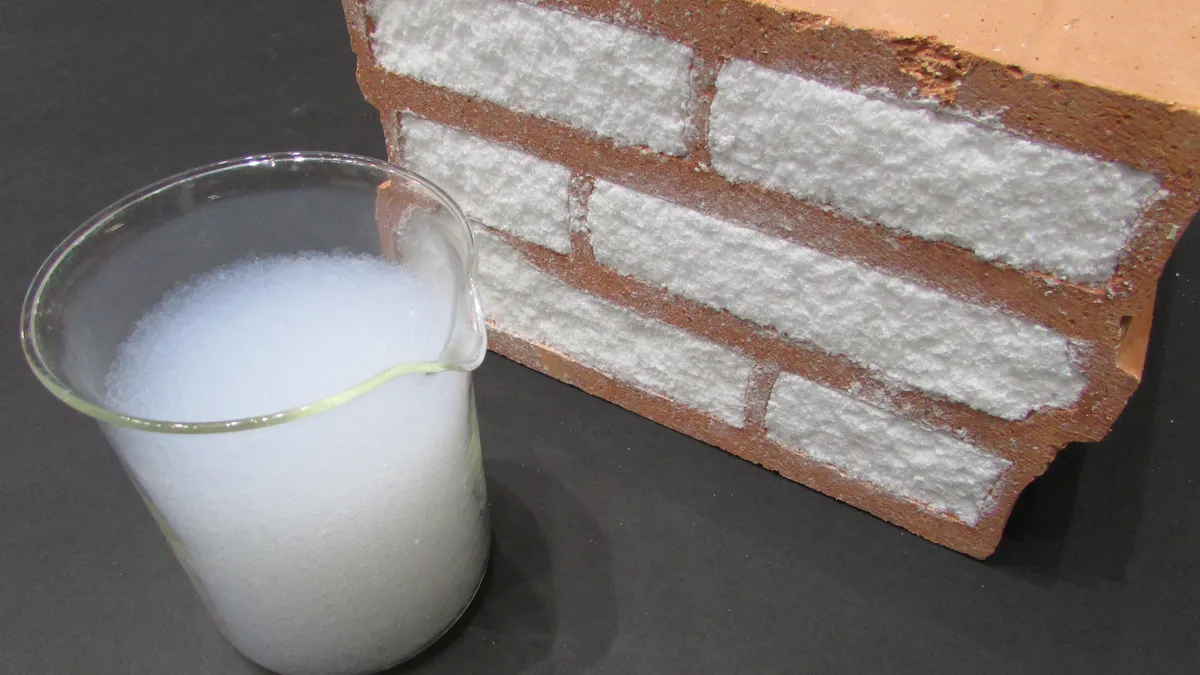Dive Brief:
- Swiss scientists with research group Empa have created a new insulating brick that would enable walls to isolate heat up to eight times better compared to a wall constructed from standard clay and shale bricks, according to the American Society of Mechanical Engineers.
- The bricks are filled with aerogel, a lightweight, manufactured material made from gel in which gas replaces the gel's otherwise liquid component. A traditional brick wall would need to be more than 6 feet deep to achieve the same insulative properties as an 8-inch-deep aerobrick wall. A perlite brick wall would have to be 35% thicker than an aerobrick wall.
- Aerogel has been used in NASA spacesuits and other insulating material, though the aerogel used to fill the bricks has a thicker paste-like consistency.
Dive Insight:
Building materials and technological innovations continue to take cues from other industries, including from NASA. NASA, in fact, encourages technological construction innovation through its Centennial Challenge, the third phase of which is currently underway. The 3-D printed habitat competition encourages participants to create technology that could develop shelters on Mars using 3-D printing and/or recycled materials.
Early last year, NASA researchers designed a concept donut-shaped dwelling for Mars that could function for several years. Surrounded by an outer shell of solid ice to provide insulative value and radiation shielding, the living torus could be assembled by robots prior to astronauts’ arrival on the planet.
Even the food industry is impacting construction — specifically, organic food waste. In 2017, engineering firm Arup proposed turning organic waste into construction materials to effectively use resources and bolster a circular economy. The 60 million tons of food waste each year could help curb the U.S. construction industry’s annual 534 million tons of waste. Material substitutions could include skyscrapers made from mushrooms, carpets from bananas and walls from corn and wheat.
Construction materials themselves also can be recycled to reduce overall waste. A recent Transparency Market Research report estimated the industry’s waste volume will nearly double to 2.2 billion tons by 2025, with North America being the second-largest waste producer. Already companies — such as AeroAggregates LLC, which takes post-consumer mixed-use glass waste and recycles it into foamed glass aggregate — are embracing what they can do with recycled materials.













